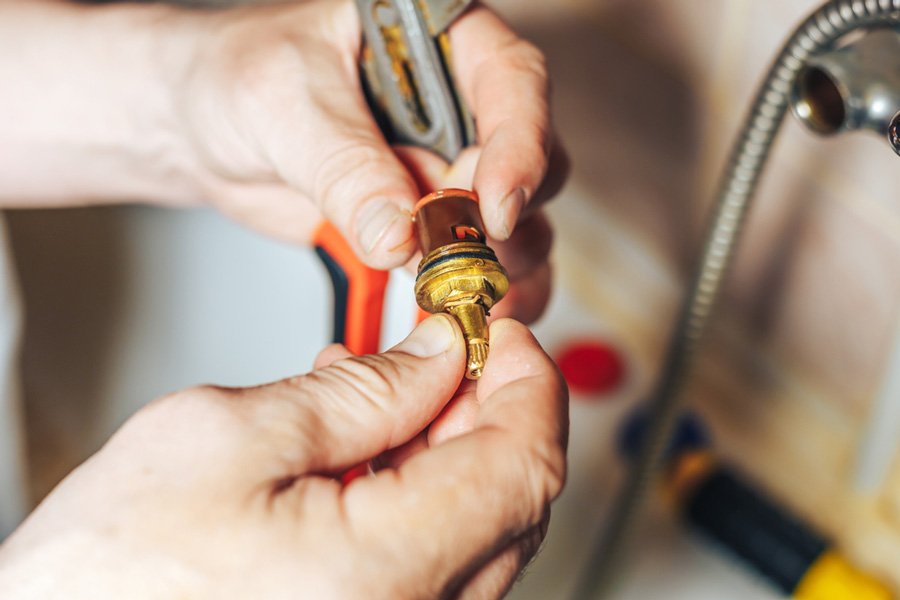Uncovering the Significance of Fixing a Faulty Faucet
Uncovering the Significance of Fixing a Faulty Faucet
Blog Article
Just how do you feel on the subject of Should I Repair or Replace a Leaky Faucet??

Trickling taps might look like a minor hassle, however their impact surpasses simply the annoyance of the audio. From drainage to sustaining unneeded monetary costs and wellness threats, neglecting a leaking tap can cause different consequences. In this write-up, we'll delve into why it's crucial to resolve this typical family problem promptly and efficiently.
Waste of Water
Environmental Effect
Leaking faucets add considerably to water waste. According to the Epa (EPA), a solitary faucet leaking at one drip per second can waste greater than 3,000 gallons of water annually. This not only pressures water resources however additionally affects ecological communities and wildlife based on them.
Step-by-Step Overview to Repairing a Dripping Faucet
Tools Required
Prior to trying to fix a dripping tap, gather the necessary devices, including an adjustable wrench, screwdrivers, substitute parts (such as washing machines or cartridges), and plumber's tape.
Usual Faucet Issues and Their Solutions
Recognize the type of tap and the specific problem causing the drip. Common troubles include worn-out washers, corroded shutoff seats, or faulty O-rings. Refer to manufacturer guidelines or on the internet tutorials for step-by-step assistance on fixings.
Financial Prices
Enhanced Water Bills
Beyond the ecological impact, leaking faucets can inflate water bills considerably. The gathered wastefulness with time translates right into higher energy expenses, which can have been prevented with timely repairs.
Prospective Property Damages
Moreover, extended dripping can result in damage to components and surface areas surrounding the tap. Water buildup can trigger discoloration, deterioration, and even structural concerns if left unattended, leading to added repair service prices.
Health Issues
Mold and Mold Development
The consistent presence of wetness from a trickling faucet develops a perfect atmosphere for mold and mold growth. These fungis not just jeopardize interior air top quality yet also pose health risks, particularly for individuals with respiratory conditions or allergies.
Waterborne Diseases
Stationary water in trickling taps can become a breeding ground for bacteria and other pathogens, raising the threat of waterborne diseases. Pollutants such as Legionella bacteria grow in stationary water, potentially resulting in serious diseases when consumed or inhaled.
DIY vs. Professional Repair service
Pros and Cons of Do It Yourself Repair Work
While some may try to deal with a dripping faucet themselves, DIY repairs come with their very own set of difficulties. Without proper expertise and devices, do it yourself attempts can intensify the problem or cause insufficient fixings, prolonging the issue.
Advantages of Working With a Professional Plumber
Employing an expert plumber makes certain that the underlying cause of the leaking faucet is resolved properly. Plumbers possess the know-how and equipment to identify and fix faucet issues successfully, conserving time and lessening the risk of further damages.
Environmental Responsibility
Specific Payment to Conservation
Taking obligation for taking care of dripping taps aligns with wider efforts towards water conservation and ecological sustainability. Every individual's activities collectively make a significant influence on protecting precious sources.
Lasting Living Practices
By prioritizing punctual repair work and taking on water-saving practices, people add to sustainable living methods that benefit both existing and future generations.
Preventive Measures
Routine Upkeep Tips
To prevent dripping faucets, do regular upkeep such as cleansing aerators, examining for leaks, and replacing damaged components without delay. Additionally, consider setting up water-saving gadgets or updating to much more effective fixtures.
Significance of Prompt Repair Works
Addressing dripping taps as quickly as they're seen protects against additional water waste and potential damage, inevitably saving both water and money in the future.
Impact on Property Value
Perception of Well-Maintained Residential Or Commercial Property
Keeping a building in good condition, including dealing with upkeep problems like leaking faucets, boosts its viewed value and desirability among possible purchasers or renters.
Impact on Resale Value
Characteristics with well-maintained plumbing fixtures, including taps, command higher resale worths in the realty market. Addressing leaking faucets can add to a positive impression throughout home inspections and arrangements.
Conclusion
Resolving a dripping faucet exceeds plain convenience; it's a vital action towards conserving water, reducing monetary expenses, and securing wellness and property. Whether via DIY repair work or specialist aid, doing something about it to repair dripping taps is a little yet impactful way to advertise responsible stewardship of sources and contribute to a much healthier, a lot more sustainable future.
How to Fix a Leaky Faucet: Step-by-Step Repair Guide
A leaky faucet may seem like a simple annoyance, but if it's not fixed promptly, that leak could cost hundreds to potentially thousands. From water damage to mold, mildew, and high water bills, even a tiny leak can be catastrophic if left unattended. Damage like this can even affect the overall value of your home, so it's important to take the right approach for leaky faucet repair. You may need the help of a plumber in some cases, but we've got a few tips you can try on how to fix a leaky faucet before calling the pros.
Four Faucet Types
When you're learning how to fix a leaky faucet, the first step is knowing what kind of faucet you're working with! There are four common types.
Cartridge Faucets
Cartridge faucets come in one- or two-handled varieties. In one-handled cartridge faucets, hot and cold water combines in a single cartridge. In the two-handled versions, hot and cold water are controlled separately and mixed in the faucet.
Ball Faucets
Ball faucets have a single lever you push up and down to adjust the pressure and rotate to change the temperature. A slotted metal ball controls the amount of water allowed into the spout.
Compression Washer Faucets
They're the oldest type of faucet, but they're still used in many homes — especially older ones. Compression faucets have two separate handles that, when turned, raise or lower the washer that seals a water valve. This valve stops water from flowing through the faucet when it is turned off.
Disc Faucets
Disc faucets rarely need to be repaired due to their maintenance-free design. The water flow is controlled by two discs — the upper one raises and lowers against a fixed lower disc, creating a watertight seal. If your disc faucet starts leaking, you may need to replace the seals or clean residue buildup from the inlets.
Fixing a Leaky Faucet
Step 1: Turn Off the Water
Whether you're learning how to fix a leaky bathtub faucet or how to fix a leaky kitchen faucet, always turn off the water supply to your working area when you're fixing a leak. The last thing you want is a flood added to your list of things to fix.
Look for the shutoff valves below your sink or around the tub and turn them clockwise to stop the water flow. If your faucet doesn't have shutoff valves, you may need to turn off the water for the whole house. Check to make sure it's off by turning the faucet on. If nothing comes out, you're ready to start the repair.
Step 2: Take Apart the Faucet
How you disassemble your faucet depends on the type of fixture you have. You can use a flathead screwdriver to remove the caps on top of the handle or handles for cartridge and compression faucets. Inside, you should see handle screws. Unscrew these with a screwdriver to remove the handle.
Disc- and ball-style faucets will typically have an inlet screw near the handle, and removing that will reveal the interior of the faucet.
Detach the Valve Stem
For cartridge- and compression-style faucets, you'll see the inner valve stem or cartridge once you remove the faucet handles. If you have a compression faucet, unscrew the brass valve stem. If you have a cartridge faucet, pull out the cartridge. If your cartridge has been in place for a while, it may require some tools or extra force to remove it due to mineral deposits.
Examine and Replace Parts
Once you've removed the parts, check them out to confirm what needs to be replaced. You may see corroded rubber washers, O-rings, stems, or cartridges. On a ball-style faucet, check the seats and springs for damage.
If you need to repair a leaky disc faucet, check the inlet and seals on the lower disc.
Once you determine what parts must be replaced, visit your local hardware store. Bring the damaged parts with you to ensure you can purchase the correct components to replace them.
Clean Valves and Faucet Cavity
If you've removed a stem or cartridge, you may notice mineral buildup in the faucet's threads. Use white vinegar to clean the valve seat by soaking it for a few minutes, then scrub it away with a soft toothbrush and rinse with warm water. You can also clean the interior of the faucet in the same way.
Reassemble the Faucet
Once your faucet is cleaned and the required parts have been replaced, it's time to reassemble it. Put the pieces back together and slowly turn the water supply back on. Doing this slowly is crucial because too much initial water pressure can damage the new hardware you've just installed.
https://homewarranty.firstam.com/blog/how-to-fix-leaky-faucet

Hopefully you enjoyed our excerpt on Why Are My Faucets Dripping (And Can I Fix It Myself)?. Thanks for taking time to read through our blog. Do you know about anybody else who is fascinated about the subject? Why not share it. Thanks a bunch for your time. Come back soon.
Report this page